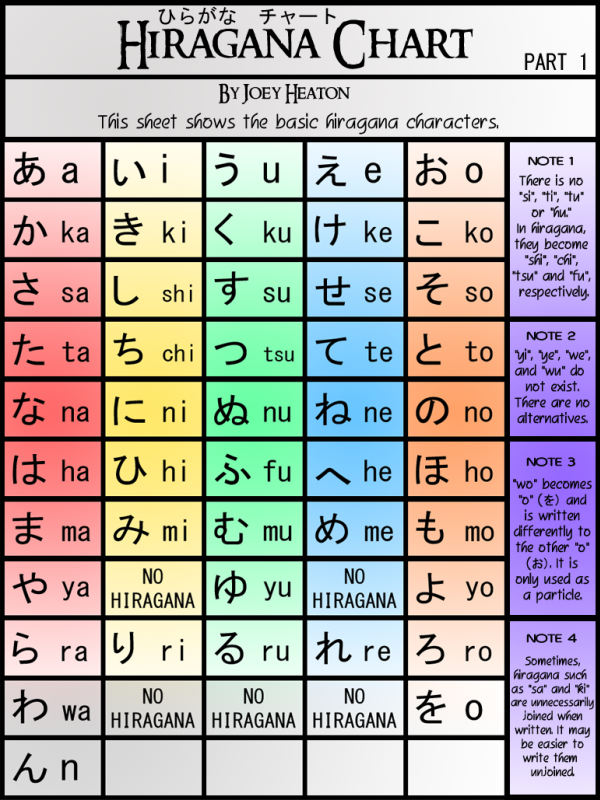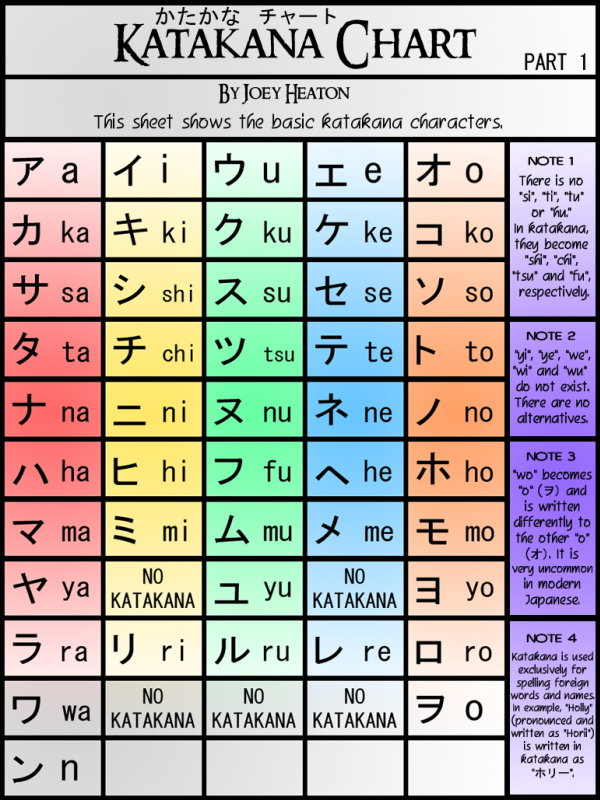Asian Group
Related: About this forumOK, now I have a complete Chart!

The other one was incomplete, sorry about that. This is better and explains better too. The first step in learning
Japanese is learning some of the symbols. This is Hiragana. Later maybe we can post one for Katakana. Kanji is abit
more complicated...as its like Chinese symbols.
Art_from_Ark
(27,247 posts)Not quite either one, it is usually pronounced like one is trying to whistle while saying "fu".
yuiyoshida
(41,832 posts)MT. FUJi or...Fuji San

Art_from_Ark
(27,247 posts)Interestingly, Japanese does not have any consonant sounds that require the upper teeth to touch the lower lips (like v and f). No "th" sound, either, and vowel sounds are pronounced exactly like in Spanish.
yuiyoshida
(41,832 posts)
Its amazing...in that in Japanese.. words that have to do with all things Japanese are in Hiragana. Things that are from outside
Japan...are written in Katakana.
For example Coffee: is Kohi. That would be in Katakana.
Tea is : ocha... and would be written in Hiragana.
Art_from_Ark
(27,247 posts)you can form some different consonant sounds by adding a special mark to certain groups of kana letters.
For example, ka か becomes ga when it is written like this が, and the same holds true for the rest of the "k" group.
Most of the "s" group can be turned into "z" sounds by adding the same mark, although shi し becomes like a j when it gets that mark じ.
The "t" and "h" groups can also be changed into different consonant sounds with the addition of a special mark.
davidpdx
(22,000 posts)I'm still trying to learn Korean. Ten years later and still can't speak it worth a darn.
yuiyoshida
(41,832 posts)easier than the Japanese system.. Since Japanese uses Kanji (Chinese characters) plus Hiragana and Katakana. But I can not imagine learning all of the Chinese characters...there must over way 10,000 of them~ A friend of mine who is from Japan said, his mother used to put a Kanji chart on the wall, near the bathtub so he could each day learn to recognize a new character.